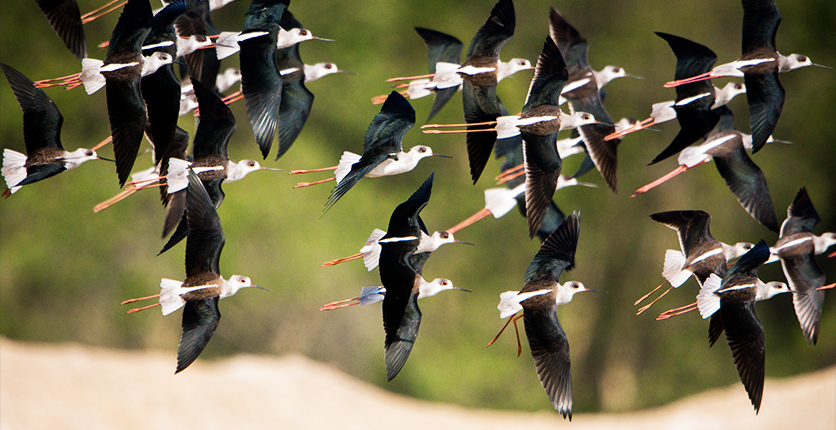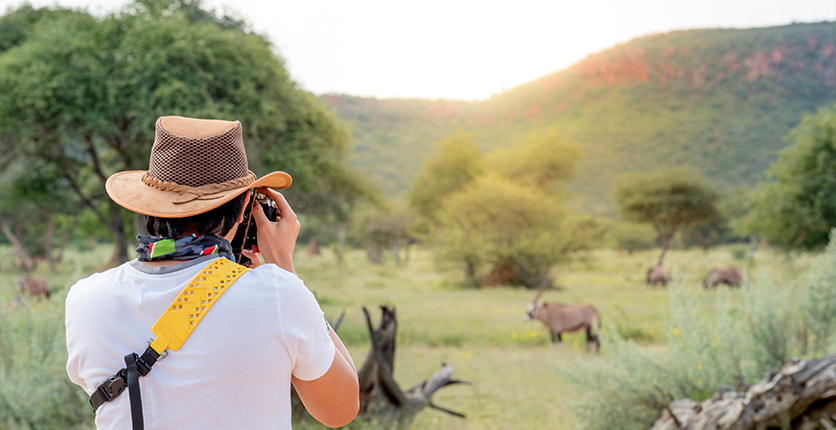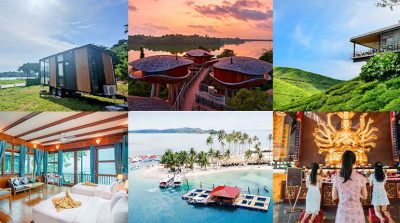Singapore may be an urban jungle, but it still has a surprising wealth of wildlife, waiting in the wings for you to discover. If you’re an aspiring shutterbug thinking about capturing these creatures for posterity, read on for tips from award-winning wildlife photographer, Kennie Pan.

Q: How do I get started in wildlife and/or nature photography?
Kennie: You definitely need to have an interest in the field of flora and fauna. People usually begin by noticing animals or nature, whether it’s on TV or online, or even from exposure to them from living near a forested area. You also need to have an understanding of nature. By observing and understanding animal behaviour, you will learn when and where to encounter them.
To get started in taking photos or videos, it would be easiest if you have a friend experienced in the field who can recommend the correct equipment to get. Otherwise, you can look online in sites like YouTube. There are plenty of teaching videos available for free online.

Q: What basic gear do I need?
To capture animal photos, your basic setup would include:
1) Telephoto lens;
2) Basic digital camera body;
3) A reliable tripod + lens head combo. (You don’t want your expensive investment to come crashing down because you didn’t pay for a proper tripod + head combo.)
A basic set up for naturescapes:
1) Wide angle lens;
2) Basic digital camera body;
3) A reliable tripod + ball head combo. (Again, you don’t want your expensive investment to come crashing down because you didn’t pay for a proper tripod + head combo.)
Q: What should I wear and bring with me?
Many people opt for comfort and just wear running shoes and shorts. This is in fact dangerous and there have been many cases where people have been bitten by snakes. You should never be complacent about safety, especially if you’re going into thick overgrown areas where fewer people venture. Let’s start from the bottom:
1) Boots. Proper boots, best would be those made with Gore-Tex, are waterproof, high (shin level is safer) and thick (if there are any snakes on the ground, they will attack your legs first). High waterproof boots keep you comfortable and dry too, as stepping into puddles is the norm in the forest.
2) Cargo pants and a long sleeved thick shirt especially when bashing through forest. They protect you from insect bites and sunburn too. Dark colours are good and it’s best not to wash them in chemicals like detergent, because animals will pick up the scent and flee (especially deer, which are very sensitive to smells and sounds).
3) A round hat – This is optional, but it shades your eyes and makes it easier to see under the hot sun.
4) Umbrella and waterproof raincoat. An umbrella won’t be enough to keep you and your gear completely dry in a forest; combine it with a waterproof coat (camouflage style is great) and high waterproof boots to stay as dry as possible.
5) Some food and water.
6) Knife and pepper spray to protect oneself (depending on where you’re going).
7) Torchlight for when it gets dark.
Q: What are some good spots around Singapore to get started with wildlife or nature photography?
Kennie: The first easy spot to find wildlife in Singapore is the Singapore Botanic Gardens, as the birds and monitor lizards there are quite used to humans.
Other good places would be Bukit Timah Nature Reserve, MacRitchie Reservoir Park, Windsor Nature Park and Lower Peirce Reservoir. Any central catchment nature reserve areas are good, as they are all linked.
Different areas host different animals, plants, birds and aquatic life, so you have to know what you are after, then you will know which approximate environment to search in.
In fact, there is wildlife everywhere you go if you keep your eyes and ears open, and take notice of things around you. Even potted plants commonly seen in HDB corridors may have yellow-vented bulbuls or olive-backed sunbirds nesting – right outside your doorstep. Most people do not realise it.

Q: When it comes to wildlife, what do we have to be mindful of?
Kennie: Depending on the country and location, do take note of the area you are entering. For example, if entering bear territory, bring pepper spray. Snakes, especially in Asian environments, are commonly found in lowland forests. Watch where you are going, as there might be snakes hanging in vines and overhanging branches. Most snakes are invisible to the untrained eye. To be safest, stick to trails and avoid overhanging branches and leaves. Watch where you step, too.
Contrary to popular belief, especially with the recent attacks in Singapore, wild boars are usually elusive and shy animals. A wild boar will usually attack only if cornered. To prevent aggressive wild boars, humans have to stop feeding them. Feeding emboldens them and in turn, makes them vulnerable to poaching (in other countries), while endangering humans too. Personally, I have not come across any aggressive wild boars. If you happen to bump into any, back away slowly, don’t make a sound, and don’t make any sudden movements. Give them space.
For more tips, click here to read what you should do when you encounter wildlife.

Q: What tips do you have to share for getting good wildlife photos?
Kennie: The best time for nature photography or videography is at sunrise and sunset. This is the time when night transitions to day and vice versa, and animals start to wake up or prepare to sleep. It is their most active time to search for their first or last meal of the day, just as it is for humans. Midday will be too hot, so most animals will be hiding.
Use a tripod for higher quality photos. Lower your ISO (a camera setting that will brighten or darken a photo) as much as you can while still maintaining picture quality, and be sure that your shutter speed is still adequate for what is to come. Always put your setting on “Auto Focus Continuous” as moments come and go quickly.
Preset your settings the moment you enter the area, and be ready for any moment. When you go to another area or when the lighting changes, change your settings too.
Composition wise, be sure to know what you are shooting, why you are shooting it, and the story you want to tell. The way you think will determine how you compose a photo.
Have some questions about wildlife or nature photography? Send them to magnsman@sph.com.sg!
About Kennie Pan

Kennie Pan is a nature photographer who has won several international photography awards, among them the Grand Prize (Junior Category) in the BiodiverCity Wildlife Photography Competition 2010, where a total of 2,200 photo submissions from 725 participants were submitted; a Finalist Award (Professional Category) of the One Eyeland Photography Competition 2013 in the Nature-Wildlife Category; and a Bronze Award at the CrowBar Awards 2014 in the Nature-Still Life Category. You can view more of Kennie’s works here.






